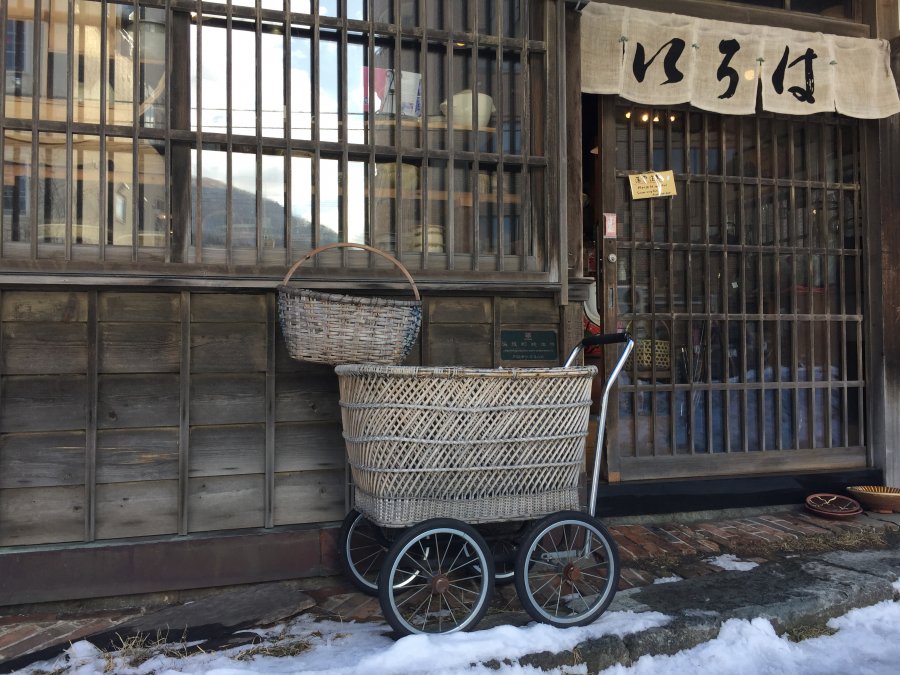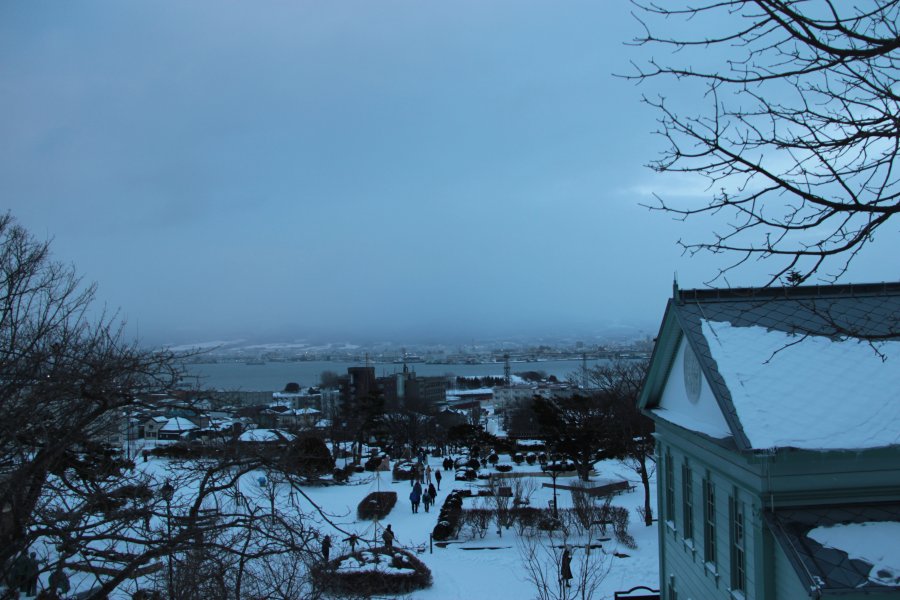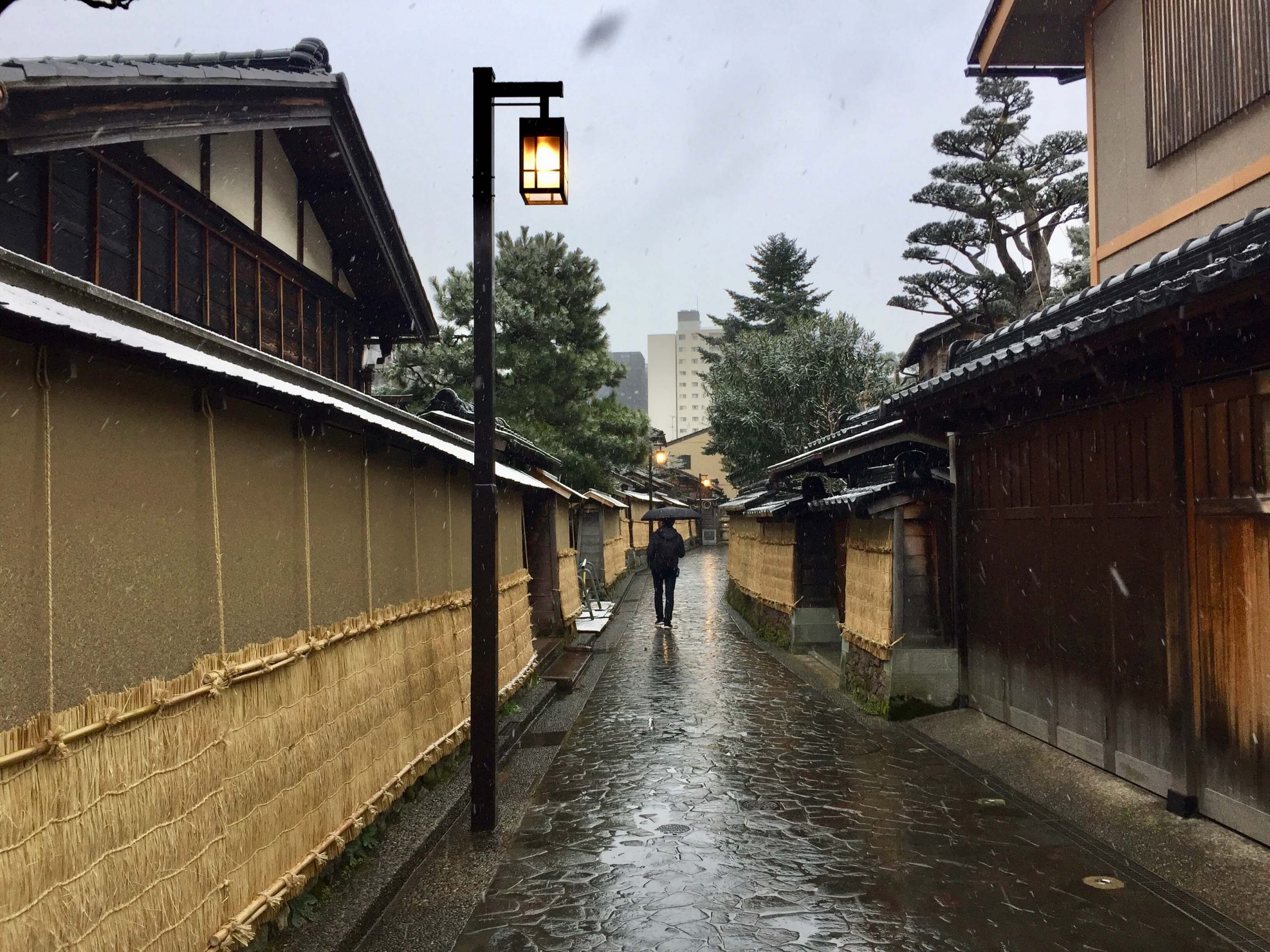I’ll start by saying that a single day would be enough to visit Hakodate, but I needed to slow down and relax, and this town in southern Hokkaido was the perfect spot at the ideal moment.

It’s a 3h30 train from Sapporo and is a port city with a treacherous shape. It looks like an hourglass between high hills, the harbour, and the Strait of Tsurgu, and while strolling aimlessly, it’s easy to get lost and find yourself on the wrong waterfront.
Quick guide of Hakodate, pearl of Hokkaido
With its long, uphill roads, vintage tram, nice coloured wood houses, relaxed atmosphere, and sea breeze, Hakodate immediately reminded me of San Francisco despite the heavy snowfall!
I stayed for three nights in one of these houses in the Motomachi district, on the hillside. Furnished in traditional style, my room included a coffee table on the tatami floor, cushions, and futons to sleep on at night, all in front of a large window covered with rice paper panels.
It is zen and cosy at the same time. The owner, Masahiro, has another two rooms with bunk beds in a hostel-style, but during my visit, I was the only guest.







What to see in Hakodate
Hakodate was the first Japanese harbour opened to the Western world, and in the Motomachi district, you can tell! It’s dotted with churches of all religions and architectural styles, with ancient government buildings in colonial style. According to the tombstones, there is also a cemetery for foreigners, mostly sailors and Russians, British, and French.
Among the many churches scattered around the hill, I especially liked the Orthodox one, just behind “my home.” Its typical convoluted copper domes were just right in the snowy landscape. You can also enjoy a nice view of the gulf from its courtyard.
The zen sanctuary Gokoku, near the cable car entrance, is also worth a visit. It is very peaceful and has a lovely design.
I liked the Public Palace (300 yen) among the public buildings. It is painted in yellow and blue wood and has a sumptuous porch and a terrace overlooking the sea that makes you dream. A few meters further down, the former British Consulate (300 yen) exhibits some memorabilia linked to the Crown and is home to a lovely English tea room. Some rooms were undergoing restoration, so I’m unsure if the exposition is more extensive.
I preferred the Museum of Northern Peoples (300 yen), which is dedicated to Ainu culture.
But what I really loved in Hakodate was the morning fish market, a few tens of meters from the station. As in Sapporo, you go to the market to buy fresh fish and eat on the spot, and the grilled crab is actually yummy!






If the sky is clear, you should also take the cable car up to the top of the Hakodate-Yama (1200 yen for the return pass). The view at sunset is awe-inspiring, but due to heavy snowfall, I had to wait until the last evening to enjoy it.
Masahiro told me there is also a tourist bus that leaves from the train station and climbs to the top in case you suffer from vertigo …
Another panoramic site, always if the weather is nice, is the tower of the Goryo-kaku (840 yen). You can admire the strong namesake-shaped five-pointed star. The park of the fort under the snow is not that beautiful, and it’s actually not worth the tram ride (tram n° 2 or 5, 250 yen per ticket or 600 yen for a daily pass), but it’s full of cherry trees, and I imagine that in mid-April, it’s a fairytale place.








Where to eat
In addition to the morning market, which closes around 1:30 p.m., plenty of restaurants are on the seafront in the Kanemori Red Brick Warehouses. These old warehouses for maritime trade have been restored and converted into a large shopping mall.
I recommend Ajisai and Kurenai for their excellent ramen, especially for the succulent curry noodles soup. I’m still dreaming of (you order at the touch screen outside and only after paying to enter the restaurant, handing your ticket to the waiter).
If you are in a hurry and love sushi/sashimi, you should also try the Kaitenzushi Marukatsusuisan Honten, which is a good value for money. If you’re quick ordering on the tablet at your disposal, they’ll serve you in a minute!
I also liked Takahashiya‘s ramen and the one served in the restaurant on the corner of the food market, which is always in the neighbourhood of old brick warehouses. If you love to cook and experiment in this market, you can buy all the ingredients of traditional Japanese cuisine!





What to see in the area
Maybe I should say: what not to visit, but I would be partial …
I have been to Yunokawa Onsen Saru, 15 minutes by bus from Hakodate (260 yen), to take a bath in an onsen they recommended me (the Nezaki-yu) and once finished I went to visit the botanical garden by the sea (300 yen). The garden is really well maintained and lush, and during my visit, there was also an older man who dabbled – with great skill – the grand piano for the visitors, but once there, I found that the main attraction is the macaques taking a bath in an onsen built for them.
It’s a tiny zoo between the city buildings, with too many monkeys in a too-small space and visitors pulling their food from an upper platform. I felt sick, cried, and walked back to destress.





If this doesn’t bother you, I must admit that you can take nice pics…









